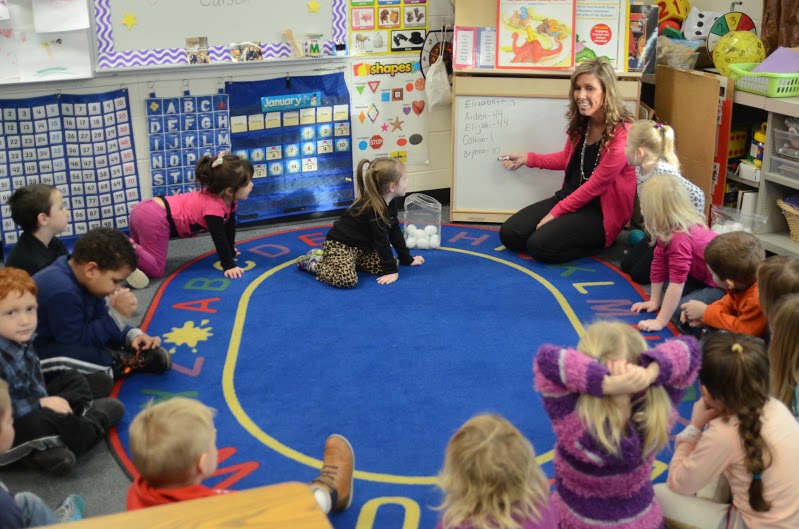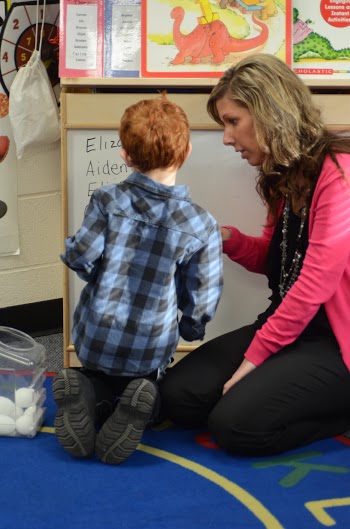A Great Start to preschool expansion
More than 21,000 additional Michigan 4-year-olds have enrolled in free, high-quality preschool in the past two years, the result of the biggest preschool expansion in the nation.
There are also thousands more children who are now in full-day preschool instead of half-day, and are getting free transportation to the schools – two factors that had kept many low-income families from taking advantage of the program in the past.
The impact of the $130 million expansion is a major victory for business, education and political leaders who have argued that childhood education is a worthwhile investment for Michigan, as well as a potential game-changer for tens of thousands of children from families of limited income who will be better prepared for the critical early years of school.
A 2012 Bridge investigation, “Michigan’s forgotten 4-year-olds,” found that almost 30,000 4-year-olds who qualified for free, high-quality preschool weren’t in classrooms because of inadequate state funding, logistical hurdles and poor coordination of services.
In May 2013, at the urging of Gov. Risk Snyder, the Michigan Legislature increased funding for the state’s preschool program for low- and moderate-income families, called the Great Start Readiness Program, by $65 million. The Legislature added another $65 million in 2014 to the program, in which children learn from teachers with an early childhood speciality certification.
The results:
- More than 37,000 4-year-olds are enrolled in GSRP this year, according to the Michigan Department of Education and an analysis by Bridge. That’s a 61 percent increase in two years.
- Over the first two years of the expansion, more than 21,000 additional 4-year-olds have had access to free, high-quality preschool. Seven thousand additional children were served in the first year of the program, and this school year, that number has ballooned to 14,000.
- The total number of children affected by the expansion is actually greater than 21,000. About one-third of GSRP students were enrolled in full-day preschool programs two years ago; now, over half (54 percent) are in class full day, effectively doubling the instructional hours available to help prepare the 4-year-olds for kindergarten. Some children couldn’t attend GSRP in the past because their parent could not take time off from work to pick them up after a half day of school.
- Thousands of 4-year-olds now have access to transportation to and from the programs – eliminating another roadblock many low-income families faced to enrollment – after $10 million was designated for transportation in the current state budget. Before the expansion, few districts provided transportation.
- The percentage of GSRP student in classrooms of private providers (such as churches, YMCA’s and day care centers) has jumped from 8 percent to about 29 percent in two years, coming close to the legislature’s goal of 30 percent.
- The number of “slots” – the funding equivalent of a seat in a half-day preschool program – has increased by 32,000. That’s more than double the pre-expansion figure.
‘A lifetime of difference’
Data from the Michigan Department of Education quantifies the preschool gains resulting from the two-year, $130-million investment in GSRP. The number of low- and moderate-income children in GSRP classrooms increased from about 23,000 in the 2012-13 school year, before the increased state investment, to about 30,000 in 2013-14 to 37,000 in 2014-15.
Those enrollment increases don’t necessarily tell the entire story; while GSRP is funded by the state in half-day slots, more children are enrolled in the state-funded preschool for a full school day, using two slots.
The average classroom time for GSRP students is now over five hours, an increase of 30 percent in two years.
More than 1,000 additional 4-year-olds were in GSRP classrooms in Oakland County in the spring of 2014 compared with the spring of 2012, a 75 percent increase in just two years. Washtenaw County increased enrollment by 53 percent; Jackson County, 68 percent; Kalamazoo County, 74 percent. Wayne County’s enrollment is up 20 percent, and Kent County, 17 percent.
“We’ve gone from just under 500 slots to 2,094 slots,” said Krista Carambula, director of early childhood programs for the Kalamazoo Regional Educational Service Agency, the intermediate school district for the county. “More than 50 percent (of GSRP students) are in full-day programming, Carambula said. “Parents appreciate the full-day option.”
More important than the convenience is the additional learning taking place. Numerous studies show that low-income children and children of color are more likely to enter kindergarten academically behind their white, more affluent peers, a gap that often widens in later grades, making these student groups less likely to succeed academically.
Giving vulnerable children better access to preschool means “they’re more prepared to enter kindergarten with a solid foundation,” Carambula said.
Vicksburg Community Schools in Kalamazoo County went from two half-day classes to three full-day classes since the funding increase, one at each of the district’s elementary schools. The school probably could have filled another classroom this year, and families are already signing up for GSRP classes that start in September.
“We have a huge need for this program and services,” said Vicksburg Superintendent Charles Glaes. “In order for our kids to be college-ready, they need to come in ready to learn in kindergarten. We know that early intervention is critical, (and) this program makes a lifetime of difference for these kids.”
Schools in five intermediate school districts decreased the total number of 4-year-olds in GSRP classrooms over the past two years. But this was because the schools switched to full-day preschool (using two slots) from half-day.
The two-year student data is being hailed by business, education and political leaders who fought for the additional funding on the belief that better early education will, over time, improve the state’s economy. The Children’s Leadership Council of Michigan, a coalition of business and community leaders, unveiled a plan to expand GSRP in May 2012.
“The Children’s Leadership Council of Michigan is thrilled not only about the funding for GSRP expansion, but the commitment of OGS (state Office of Great Start, within the Department of Education) and local ISDs to identify and enroll as many eligible 4-year-olds as possible,” said Paula Cunningham, president and CEO of Capitol National Bank and co-chair of the CLCM.
Cunningham noted that enrollment exploded despite eligibility for the program being tightened from 300 percent of the federal poverty line to 250 percent. Under the new guidelines, a Michigan family qualifies for GSRP with an annual income of $59,625 or less.
Michigan Education Watch
Michigan Education Watch is made possible by generous financial support from:
Subscribe to Michigan Education Watch
See what new members are saying about why they donated to Bridge Michigan:
- “In order for this information to be accurate and unbiased it must be underwritten by its readers, not by special interests.” - Larry S.
- “Not many other media sources report on the topics Bridge does.” - Susan B.
- “Your journalism is outstanding and rare these days.” - Mark S.
If you want to ensure the future of nonpartisan, nonprofit Michigan journalism, please become a member today. You, too, will be asked why you donated and maybe we'll feature your quote next time!


 These 4-year-olds may not have had the chance to be in a state-funded, high-quality preschool two years ago. Since then, extra funding from the state has let 21,000 more into the Great Start Readiness Program. (photo by Sam Zomer)
These 4-year-olds may not have had the chance to be in a state-funded, high-quality preschool two years ago. Since then, extra funding from the state has let 21,000 more into the Great Start Readiness Program. (photo by Sam Zomer) Alyssa Thompson, lead teacher for the Great Start Readiness Program at Indian Lake Elementary in Vicksburg, says she believes children will be more ready for kindergarten because of the state-funded preschool classes. (Photo by Sam Zomer)
Alyssa Thompson, lead teacher for the Great Start Readiness Program at Indian Lake Elementary in Vicksburg, says she believes children will be more ready for kindergarten because of the state-funded preschool classes. (Photo by Sam Zomer)
